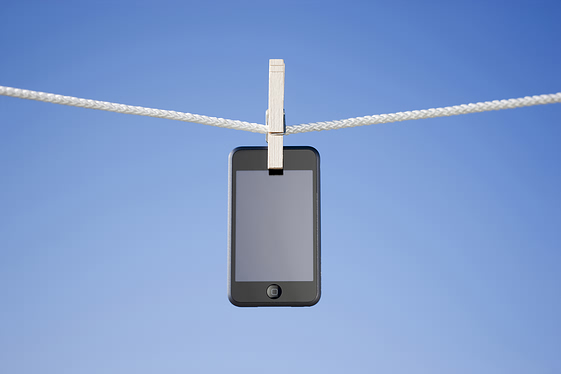1. Lock it up & don't lose it.
Keep your phone with you at all times. Do not leave your phone on a table in a restaurant or in a shopping card, or on your desk unattended.
In addition, be careful to whom you loan your cell phone.There is a new scam: Someone asks to borrow your phone to make a quick,
urgent call. You think they are tapping out a phone number, but they are actually installing a malicious application (app) that allows them complete remote access to the contents of the phone, even after they've handed it back to you. The entire process takes about 45 seconds.
In case you do lose your smartphone, make sure that you have a recent backup or sync of the phone's contents so that you don't losethat as well.
2. Turn on password protection and the auto-lock feature.
Make sure that you set the auto-lock feature (the amount of inactive time before the passcode kicks in) to no more than 2 or 3 minutes.
3. Enable remote tracking & wiping capabilities.
Remote tracking allows you to physically track the location of the phone as long as the GPS (Global Positioning System) function is turned on and the phone is not powered down. If your phone disappears, you simply log on to the tracking software from your computer and locate the phone.
Remote wiping takes protection one step further.If your phone goes missing, you can remotely
clear all of your data - including email, contacts, photos, videos, texts, and documents - off of the phone, immediately eliminating the risk posed by loss or theft. If your password is strong, you should have at least an hour to log in to your remote software and wipe the contents of the phone.
4. Utilize Password-Protection Software.
If you store passwords in an unencrypted file (i.e.,address book, spreadsheet or note-taking program), you are begging data thieves to break into all of your accounts, not just one. If you use the same password for multiple sites, you are
putting all of your valuable financial accounts at risk.
Download a reputable password-protectionapp for your mobile phone. Password-protection software gives you the tools to manage and protect sensitive passwords, financial data, credit card numbers, online identities, software
licenses, etc., behind a single, secure password that you memorize.
5. Minimize unnecessary application spying.
Some of the most popular and legitimate apps are spying on you as well. They don't intend to steal from you, but they are collecting, aggregating and selling your privateinformation for a profit. After examining over
100 popular apps, the Wall Street Journal found
that 56 of them transmit the phone's unique
device ID to companies without the user's
knowledge.
There is no perfect solution to prevent malicious apps from infecting your smartphone. However, here are a series of suggestions to minimize your chances of installing an application that shares or steals your information.
* Never open email, text, video, photo, social networking or other unknown documents or attachments from untrusted sources.
* Never click on shortened links unless you are highly confident they are from a trusted source.
* Apps, even legitimate ones, often capture and transmit a variety of your personal information. If you are using smartphone apps, face it, your information is being transmitted. If you want to
understand the extent to which your information is being shared, read the privacy policy for that application.
* Get your apps from a trusted source; don't just install the latest fad. Stick with app stores that are monitored and written up in journals, and only download apps that have been out for morethan six months.
* Paid apps tend to transmit less personal data than free apps.After all, the free apps have to make money somehow!
* If an app gives you the option to opt out of information sharing, ake it.
* When downloading applications, do your research first. Has the app been reviewed by a reputable source (Macworld, PC Magazine,
PC World, WSJ, NYT)? This doesn't guarantee security, but it does ower your chances of downloading malicious software.
* If an app requests permission to access your personal data (text messages, cell number, current location, etc.), make absolutelycertain you want to share that information before agreeing.
* If you no longer use an app, or are suspicious about it, remove it from your phone.